Yixing stoneware from the Mr and Mrs Gerard Hawthorn collection sold at Bonhams, Hong Kong, 24 November 2013
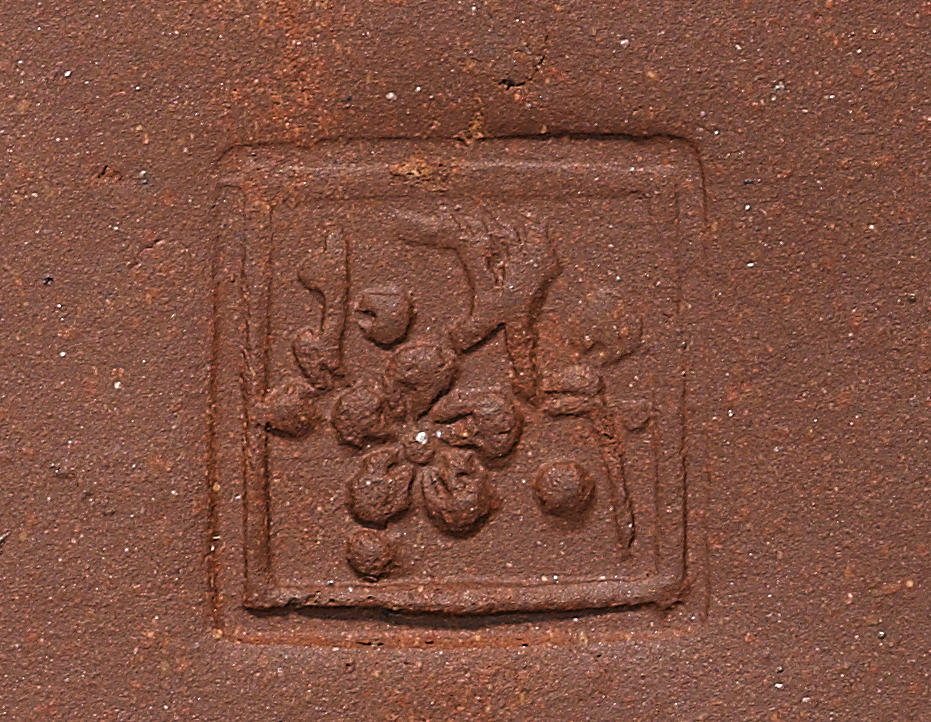
Lot 201. An Yixing stoneware jar and a cover, Late Ming dynasty-early Qing dynasty; 10.5cm high. Estimate HK$ 8,000 - 12,000. Sold for HK$ 10,000 (€ 1,195). Photo courtesy Bonhams.
Of waisted globular form, the slightly splayed foot resting on a raised foot, the stoneware of a rich mottled purplish-brown, the associated cover of elegant domed form, the base with a square prunus mark.
Note: A related Yixing stoneware jar dated to the Ming dynasty, excavated at Taizhou, Jiangsu in September 1986 is illustrated in Yixing Purple Clay Ware, Hong Kong, 1990, p. 64, pl. 12.
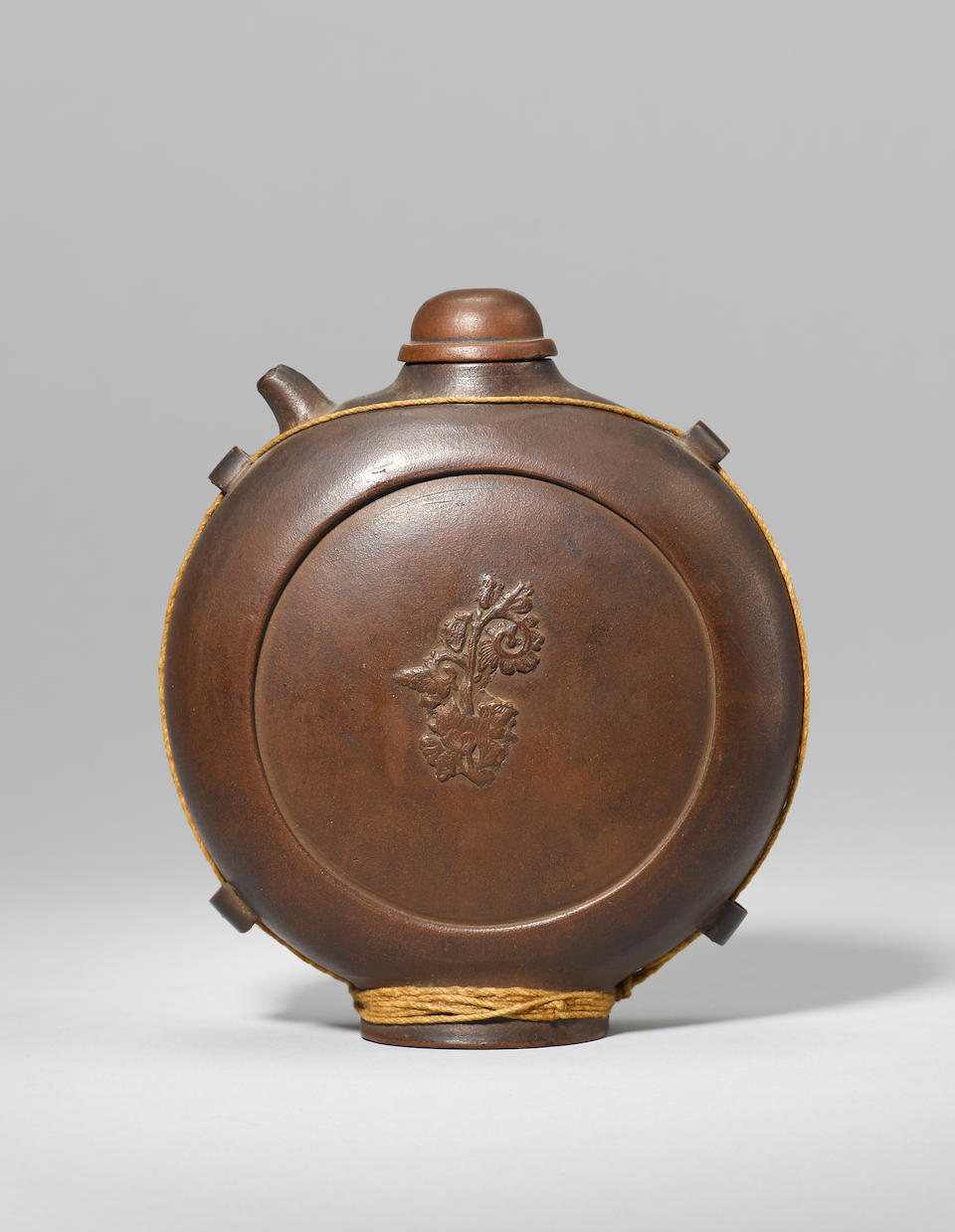
Lot 202. An Yixing stoneware flask and a cover, Early Qing dynasty; 16.5cm high. Estimate HK$ 8,000 - 12,000. Sold for HK$ 13,750 (€ 1,643). Photo courtesy Bonhams.
Of flattened circular form, supported on a short ovoid foot, applied with a short curved spout and four small circular loops for carrying the vessel, applied on each side with a stylised floral motif within a recessed circular medallion, with a flattened domed cover, attached string, the stoneware of a rich plum-brown colour.
Note: For an inscribed Yixing stoneware flask in the Palace Museum, Beijing, dated to the Yongzheng reign, see Yixing Zisha Wares in the Palace Museum, Beijing, 2009, p.240, pl. 147.
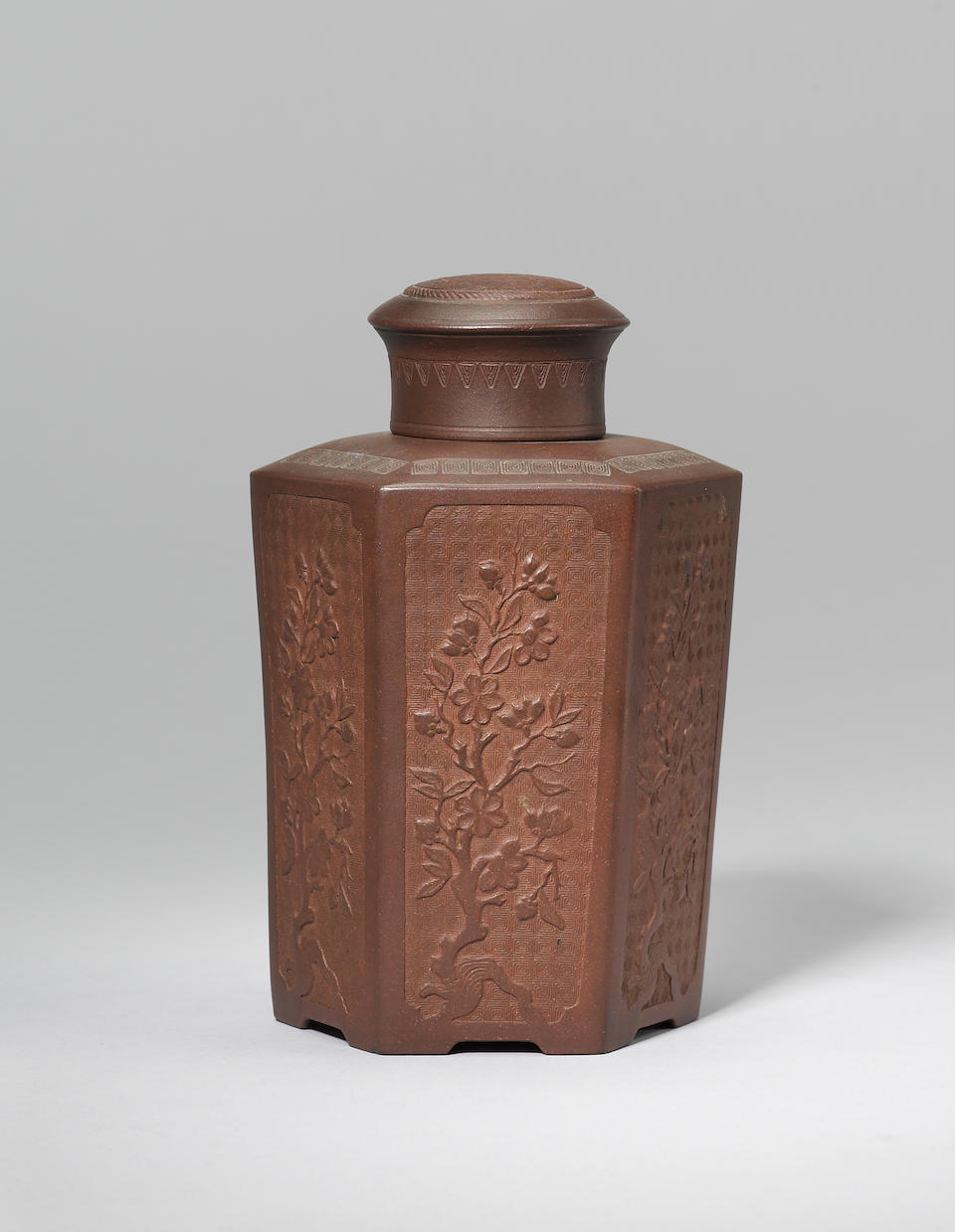
Lot 203. An Yixing stoneware tea canister and cover, Early Qing dynasty; 17.8cm high. Estimate HK$ 20,000 - 30,000. Sold for HK$ 50,000 (€ 5,977). Photo courtesy Bonhams.
Of tapering hexagonal form supported on six short bracket feet, each of the tall vertical panels decorated with raised and impressed designs of branches of luxuriant prunus reserved against a diaper ground, the shoulder impressed with a keyfret collar, the slightly domed upper surface of the cover impressed with prunus, the stoneware of a dark purplish-brown.
Note: For a closely related, but larger tea canister and cover, see K.S.Lo, The Stonewares of Yixing from the Ming Period to the Present Day, Hong Kong, 1986, p. 242, plate 172, where it is described as being a tea canister made for export.
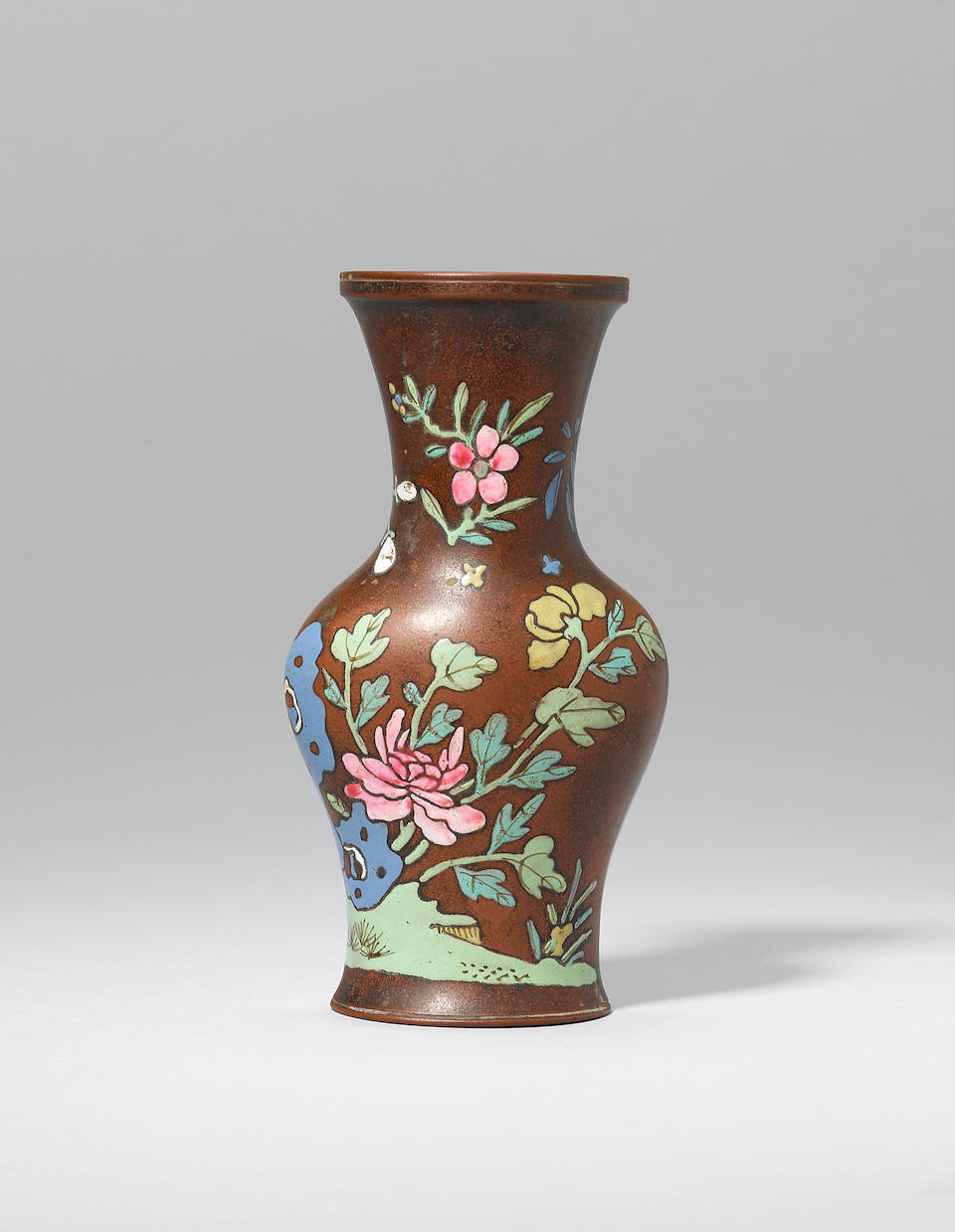
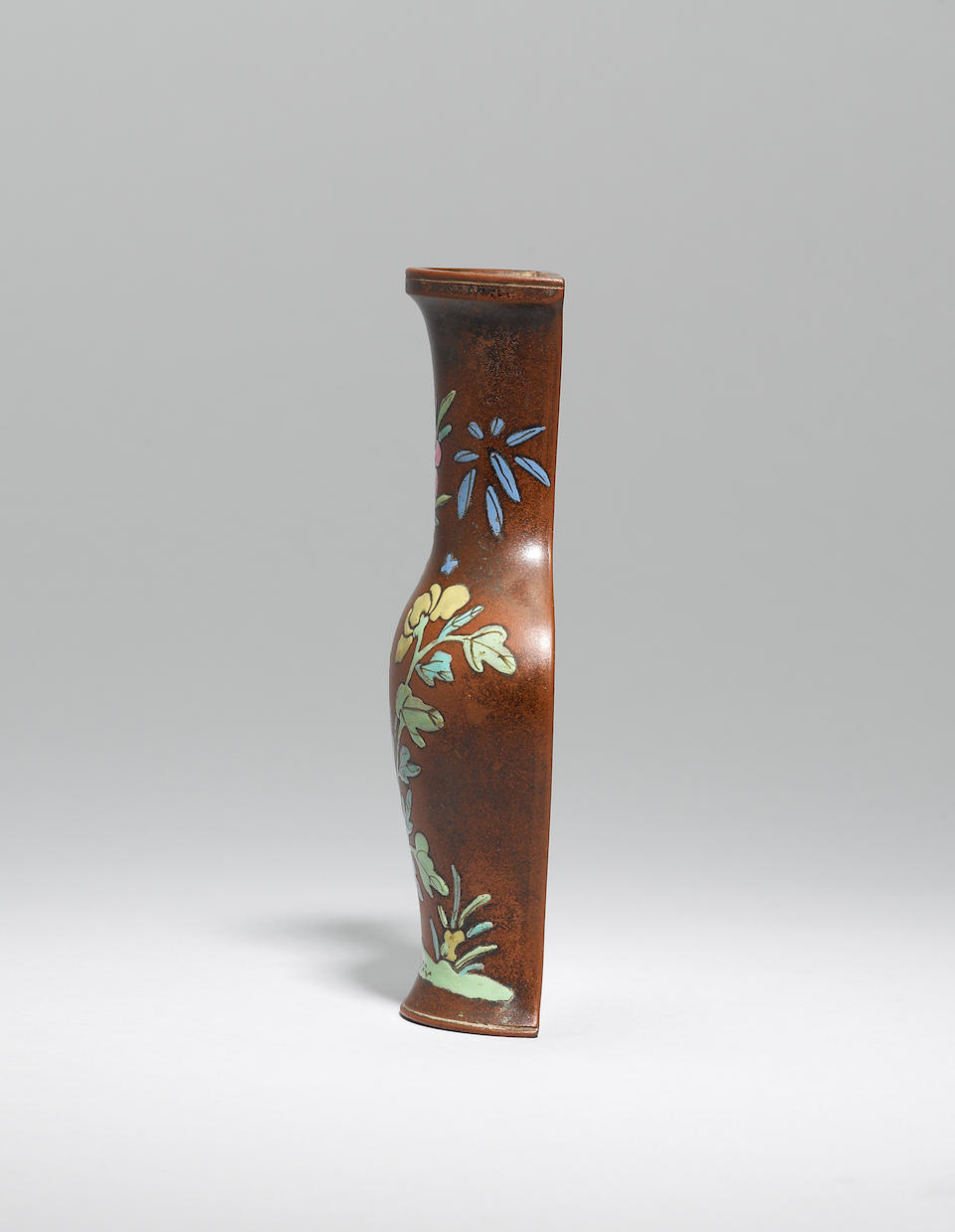
Lot 204. An Yixing stoneware famille rose wall vase, Mid Qing dynasty; 16cm high. Estimate HK$ 8,000 - 10,000. Sold for HK$ 5,625 (€ 672). Photo courtesy Bonhams.
Of baluster section, the gently curved front side enamelled in a vivid palette with flowering branches issuing from rockwork, the flattened reverse undecorated, the interior pierced with a circular hole below the rim for hanging, the stoneware of a rich mottled purple-brown colour.

Lot 205. An Yixing stoneware teapot and cover, Mid Qing dynasty; 10.4cm high. Estimate HK$ 10,000 - 15,000. Sold for HK$ 12,500 (€ 1,494). Photo courtesy Bonhams.
The elegantly potted ovoid body applied with a loop handle set opposite a slightly curved spout, inscribed on one side in lishu with a six-character inscription, surmounted by a domed cover and shallow loop handle, the centre of the cover pierced with a small circular aperture, the stoneware of a rich plum-brown colour.
Note: For a closely related Yixing teapot of similar form and stoneware colour, carved by Manshen, dated to the Jiaqing period, see Yixing Zisha Wares in the Palace Museum, Beijing, 2009, p.114, pl.54.
The inscription reads: 'Jigu zhigong, Youzhu', which literally translates as 'Carved by Youzhu, trying to copy the old'.
The current example closely follows the prototypes by the Qing scholar Manshen (1768-1822), of which there are eighteen types. All those Mansheng teapots were commissioned by him, but designed and incised by Yang Pengnian.
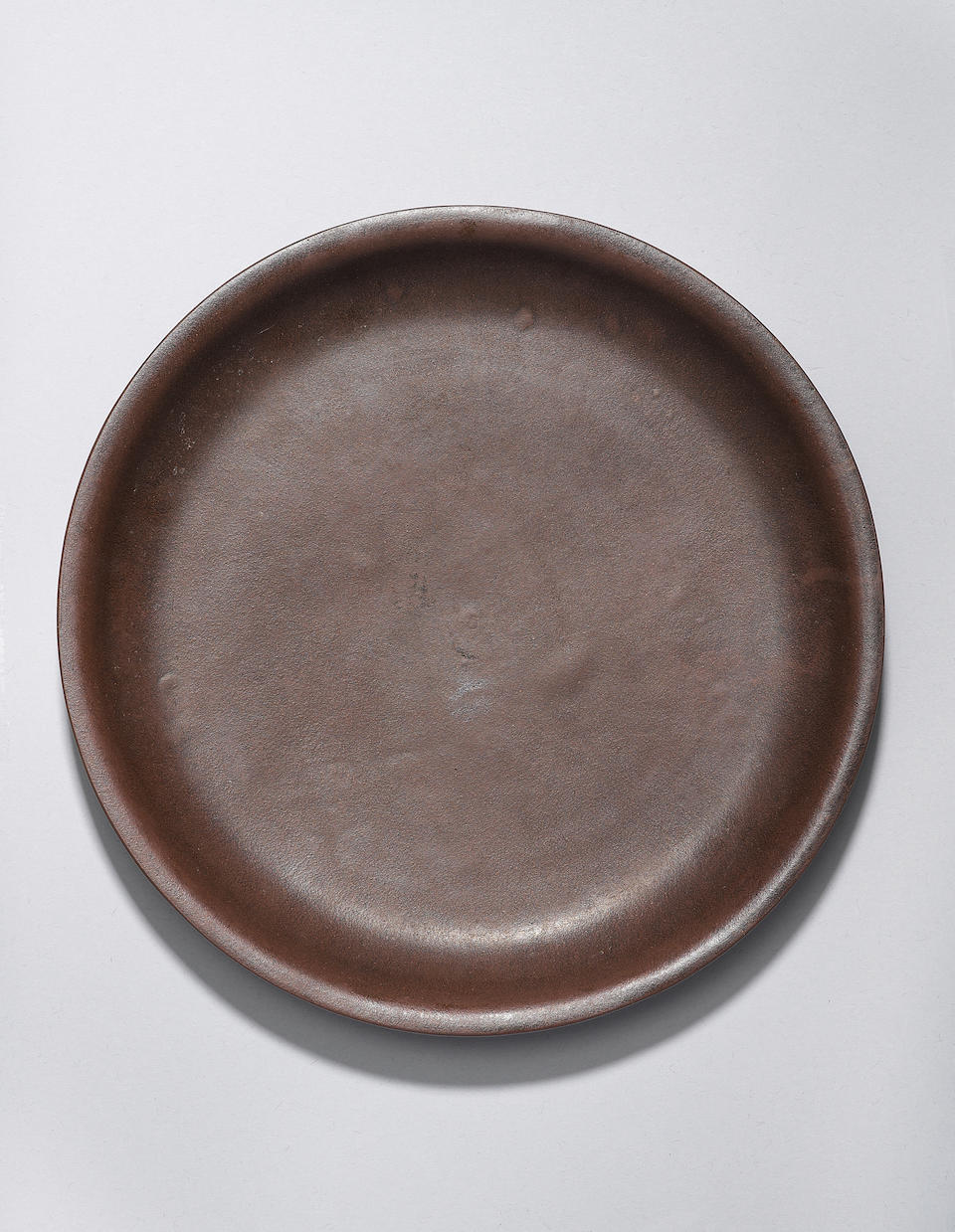

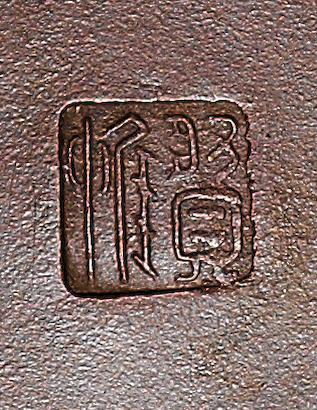
Lot 206. An Yixing stoneware shallow dish, Qing dynasty; 23cm diam. Estimate HK$ 15,000 - 20,000. Sold for HK$ 18,750 (€ 2,241). Photo courtesy Bonhams.
The finely potted dish of shallow circular form supported on a short foot, smoothly finished to the interior, the exterior impressed with a narrow band of ruyi-head lappets, the base impressed with a two-character zhuanshu seal mark, the stoneware of a rich purple-brown.
Provenance: Sydney L. Moss Ltd., London, 1983.
Note: The seal reads 'Xianwei', an unrecorded potter according to traditional Yixing connoisseurship.
For a smaller Yixing dish, similarly impressed with a square seal mark in the centre (of the potter Yigong), see Yixing Zisha Wares in the Palace Museum, Beijing, 2009, p.260, pl.162.
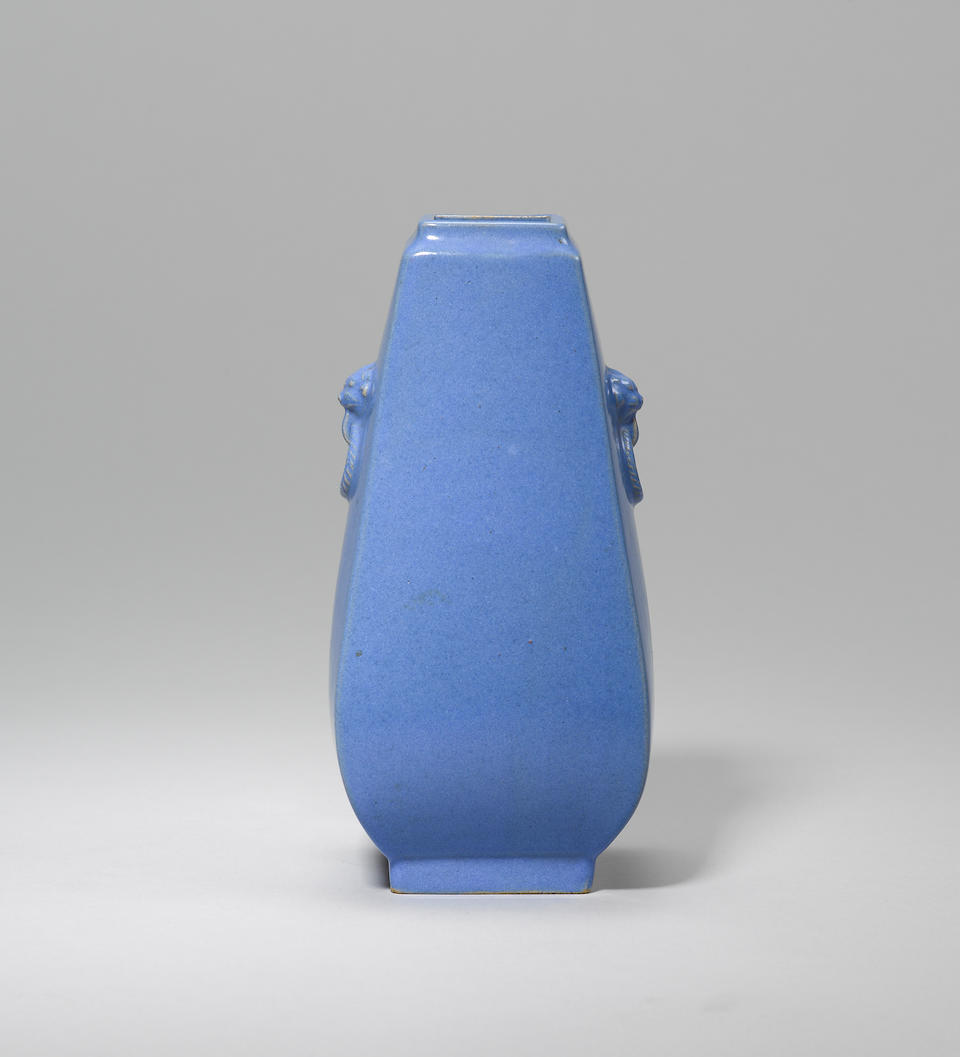
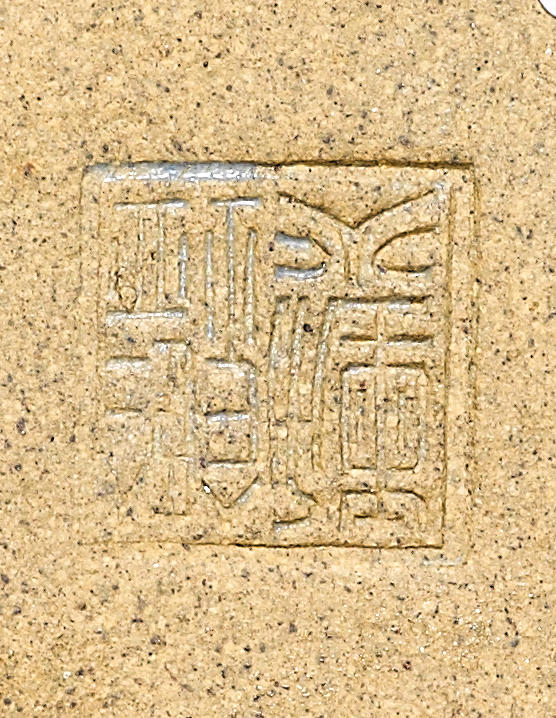
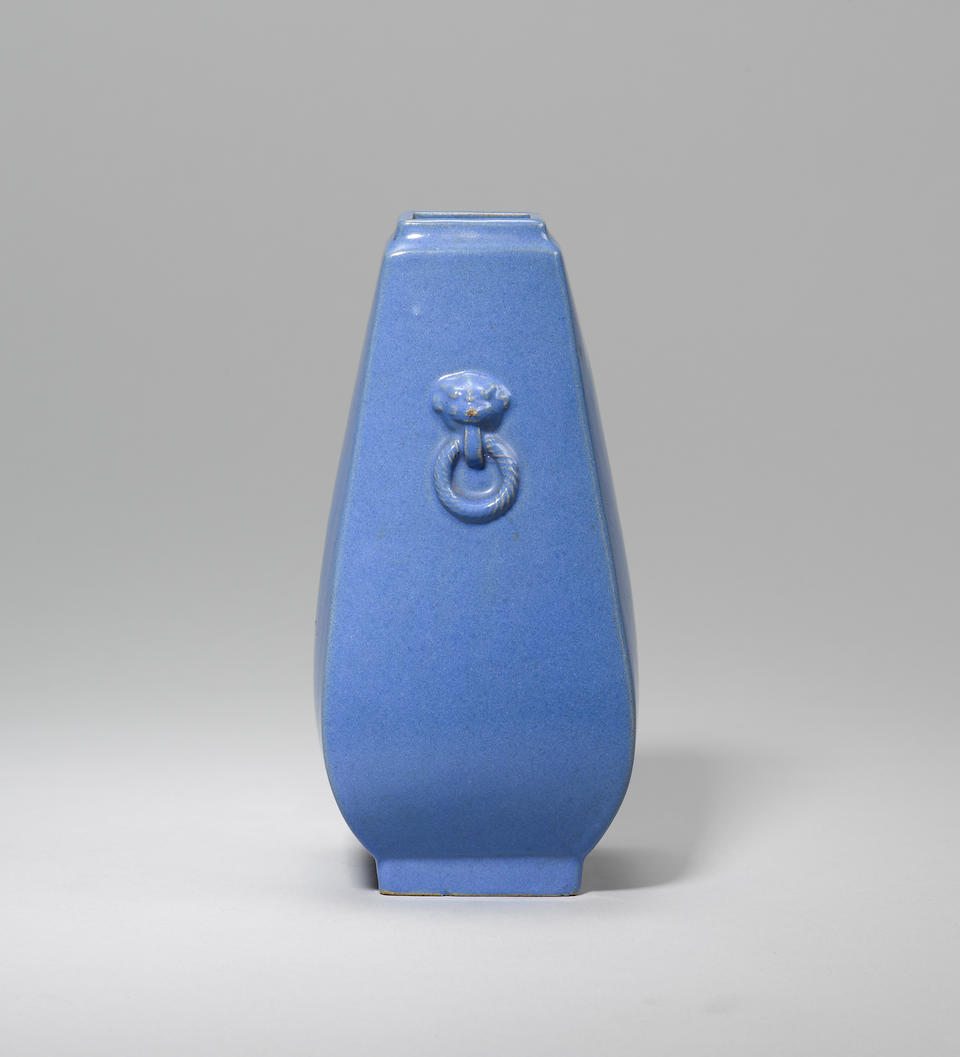
Lot 207. An Yijun stoneware sky-blue-glazed vase, Qing dynasty; 19.8cm high. Estimate HK$ 15,000 - 20,000. Sold for HK$ 18,750 (€ 2,241). Photo courtesy Bonhams.
Of archaistic fangzun form, the rectangular body supported on a straight foot and tapering to a stepped mouth, applied with a pair of taotie masks and ring handles, covered all over with an even pale blue glaze, the interior and base unglazed revealing the greenish-brown body, impressed with a two-character zhuanshu seal mark.
Note: The two-character seal 'jianzhi' can literally be translated as 'made under supervision'.
For a closely related vase from the Qing Court collection, preserved in the Palace Museum, Beijing, see Yixing Zisha Wares in the Palace Museum, Beijing, 2009, p.285, pl.185, where it outlines that the original box is affixed with a label recording the vase as being a tribute piece to the Qianlong emperor from a Buddhist lama.

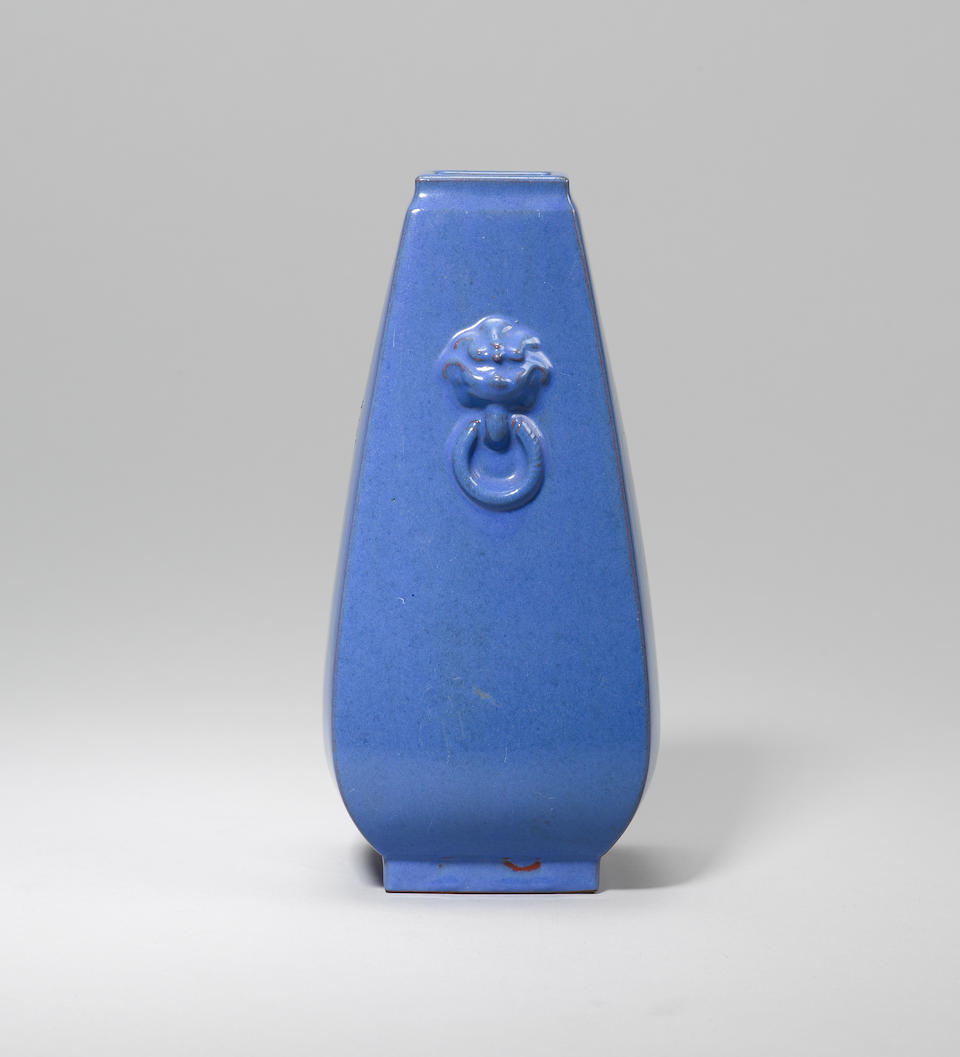
Lot 208. An Yijun stoneware sky-blue-glazed vase, Qing dynasty; 21.2cm high. Estimate HK$ 15,000 - 20,000. Sold for HK$ 18,750 (€ 2,241). Photo courtesy Bonhams.
Of archaistic fangzun form, the rectangular body supported on a straight foot and tapering to a stepped mouth, applied with a pair of taotie masks and ring handles, covered all over with a rich mottled lavender-blue glaze, the interior and base unglazed revealing the reddish-brown body.
Note: For a closely related vase from the Qing Court collection, preserved in the Palace Museum, Beijing, see Yixing Zisha Wares in the Palace Museum, Beijing, 2009, p.285, pl.185, where it outlines that the original box is affixed with a label recording the vase as being a tribute piece to the Qianlong emperor from a Buddhist lama.
Bonhams. FINE CHINESE CERAMICS AND WORKS OF ART. Hong Kong. 24 Nov 2013

/https%3A%2F%2Fprofilepics.canalblog.com%2Fprofilepics%2F1%2F0%2F100183.jpg)
/https%3A%2F%2Fstorage.canalblog.com%2F03%2F02%2F119589%2F96711876_o.jpg)
/https%3A%2F%2Fstorage.canalblog.com%2F11%2F31%2F119589%2F94773502_o.jpg)
/https%3A%2F%2Fstorage.canalblog.com%2F20%2F83%2F119589%2F94772815_o.jpg)
/https%3A%2F%2Fstorage.canalblog.com%2F26%2F72%2F119589%2F75604929_o.jpg)
/https%3A%2F%2Fstorage.canalblog.com%2F59%2F60%2F119589%2F26458628_o.jpg)



/http%3A%2F%2Fstorage.canalblog.com%2F36%2F37%2F119589%2F126076906_o.jpg)
/http%3A%2F%2Fstorage.canalblog.com%2F55%2F73%2F119589%2F122320023_o.jpg)
/http%3A%2F%2Fstorage.canalblog.com%2F42%2F48%2F119589%2F106933664_o.jpg)
/http%3A%2F%2Fstorage.canalblog.com%2F54%2F52%2F119589%2F96127917_o.jpg)